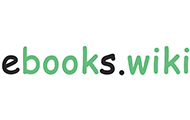 Writing a Translation Commentary (Routledge Introductions to Translation and Interpreting)
Writing a Translation Commentary (Routledge Introductions to Translation and Interpreting)
by: Penélope Johnson (Author)
Edition:1st
Publication Date: December 5, 2023
Language:English
Print Length:244 pages
ISBN-10:1032227036
ISBN-13:9781032227030
Book Description
This essential textbook is a step-by-step guide to how to write a self-reflective translation commentary, a key requirement of most courses on translation.Starting with source text analysis, it guides students in how to set out a translation strategy and goes through the most common challenging issues encountered, thus enabling students to set out their translation priorities in an informed manner. Throughout each chapter, there are boxes summarising key concepts and suggestions of tasks and activities, as well as recommendations for further reading. The book is supplemented by online resources for students and teachers on the translation studies portal. There are nine PowerPoints based on the chapters of the book that could be used for teaching or self-study. There are also downloadable versions of sample assessment rubrics, tables for example selection, and checklists. Based on real life examples of students' work in different language combinations, drawing on the author's years of experience of teaching commentary writing, this book focuses on several types of language mediation that go beyond the written word, such as interpreting, audiovisual translation, localisation, and transcreation.This is a vital textbook for students writing commentaries on translation and interpreting courses, a useful resource for supervisors providing students with guidance on how to write a balanced, articulate, and convincing commentary and a handy reference for professional translators and interpreters needing to explain their translation decisions to clients.
About the Author
This essential textbook is a step-by-step guide to how to write a self-reflective translation commentary, a key requirement of most courses on translation.Starting with source text analysis, it guides students in how to set out a translation strategy and goes through the most common challenging issues encountered, thus enabling students to set out their translation priorities in an informed manner. Throughout each chapter, there are boxes summarising key concepts and suggestions of tasks and activities, as well as recommendations for further reading. The book is supplemented by online resources for students and teachers on the translation studies portal. There are nine PowerPoints based on the chapters of the book that could be used for teaching or self-study. There are also downloadable versions of sample assessment rubrics, tables for example selection, and checklists. Based on real life examples of students' work in different language combinations, drawing on the author's years of experience of teaching commentary writing, this book focuses on several types of language mediation that go beyond the written word, such as interpreting, audiovisual translation, localisation, and transcreation.This is a vital textbook for students writing commentaries on translation and interpreting courses, a useful resource for supervisors providing students with guidance on how to write a balanced, articulate, and convincing commentary and a handy reference for professional translators and interpreters needing to explain their translation decisions to clients.
未经允许不得转载:电子书百科大全 » Writing a Translation Commentary (Routledge Introductions to Translation and Interpreting)


评论前必须登录!
登陆 注册